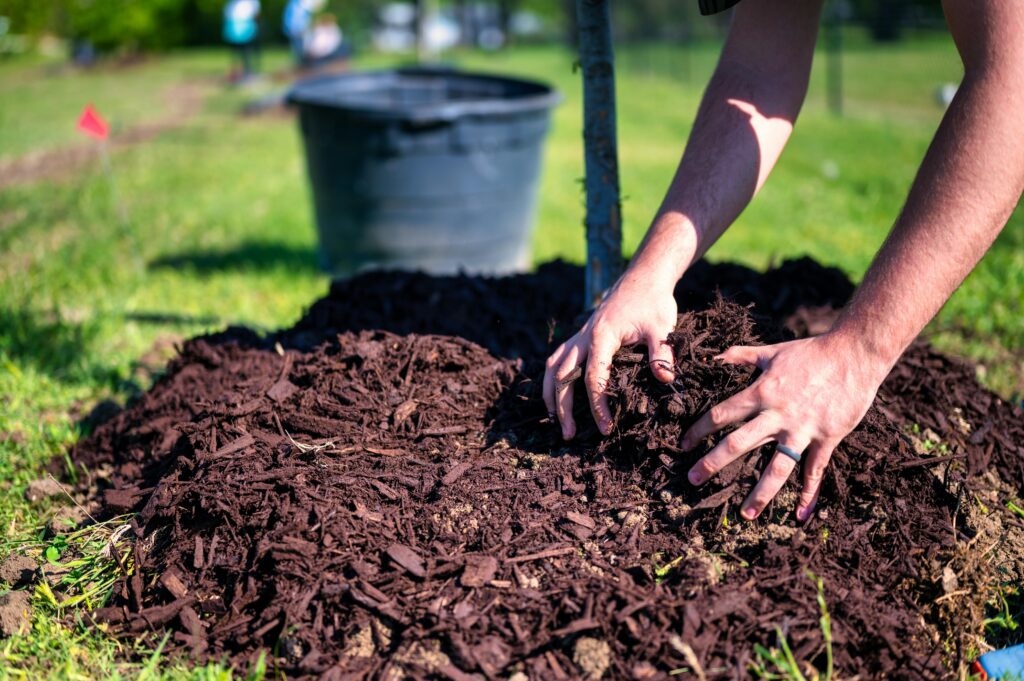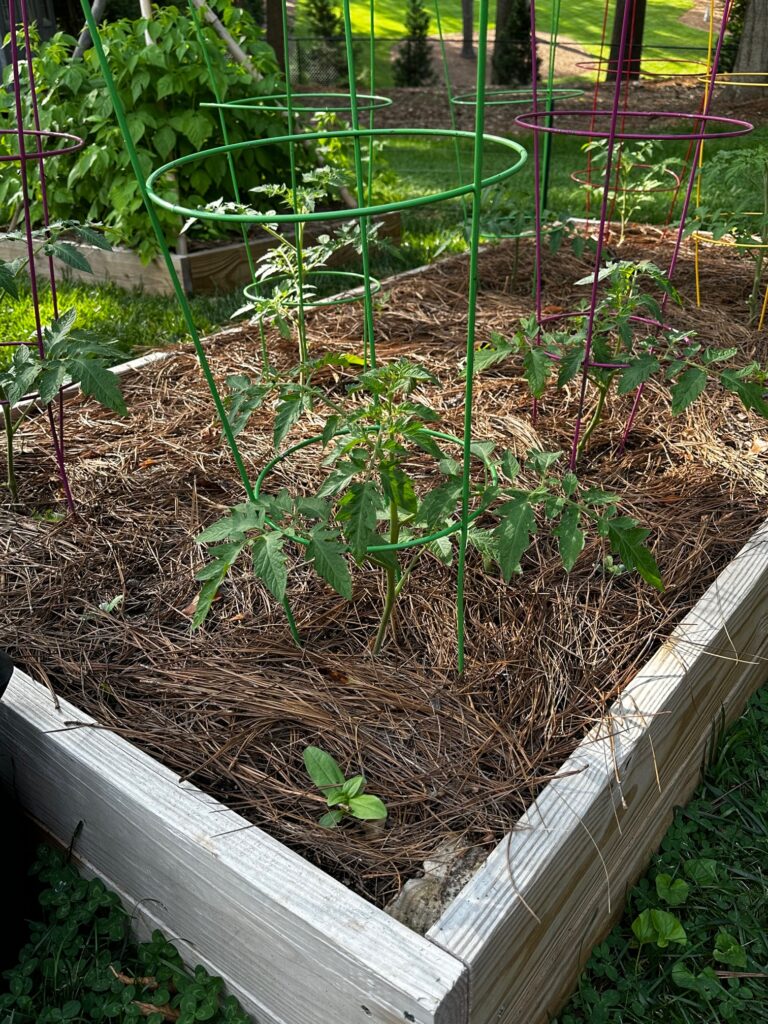Summer is here! And so is the heat! Watering is critical as always, but there’s a simple thing you can do to help keep your garden in great shape…Mulch!

We’re fans of mulching in our organic gardens during the summer months. Mulch helps moderate soil temperatures, controls exposed soil erosion, prevents nutrient depletion from water runoff, mitigates weeds and retains moisture for thirsty plants.
Applying a nice 2-inch to 3-inch layer of mulch on top of exposed soil will simultaneously protect the soil, maintain moisture and feed the living food web below as the mulch breaks down.

What’s the best Mulch? Pine straw, hay straw, wood chips, leaves, grass clippings, or bark all make for great sources of organic mulch.

While there’s no shortage for the different types of mulch you can use in your garden, there are some “best-practices” for summer mulching.
- Use aged mulch as it is less likely to contain insects, weeds and/or diseases
- Select coarse mulch. Larger pieces are less likely to clump together and tend to decompose better than small particles
- Leave space around plant stems and trunks. A few inches separation will help ensure proper air circulation.
- Limit the mulch depth to 2-inches or 3-inches.
- Spread mulch evenly and in a uniform manner
- Top-dress thinning mulch with a thin fresh layer
- Continue to apply fertilizer
- Ensure your bed or garden is draining properly after rains
- Pull weeds before they spread and/or treat with organic herbicides as necessary
Summer mulching helps to provide your garden with a protective and functional layer for your soil. Mulch can be effective at keeping moisture near the plants and promotes root development during the hot days. Mulch also provides an attractive, uniformed look to any raised bed or in-ground garden!
Happy mulching y’all!

Leave a Reply